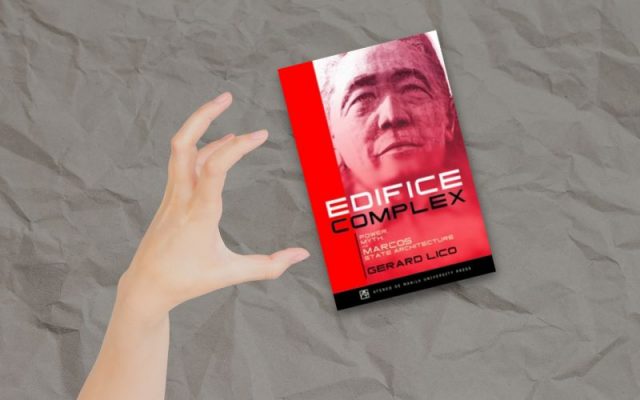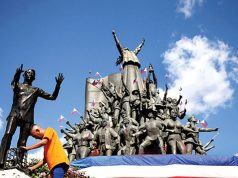
Back due to popular demand.
The Ateneo University Press announced that it is reprinting a non-fiction book by art historian and architect Gerard Lico after receiving several requests about it.
The publishing house of the Katipunan-based university said that readers can now reserve their copies of the “Edifice Complex: Power, Myth, and Marcos State Architecture” or purchase it at their booth at the upcoming Manila International Book Fair.
Those interested in the reservation can fill out a Google Docs form, which states that individuals who have paid and accomplished it on or before September 14 “will be serviced when the books arrive.”
“Those who have reserved but have not paid yet will only be serviced AFTER the Manila International Book Fair, and until supplies last,” the publishing house said.
It added that the book will also be available in their booth at the MIBF from September 16 to 18 at the SMX Convention Center, Mall of Asia in Pasay.
The Ateneo Press also shared a review from architectural historian Paulo Alcazaren in describing the book. He said:
“Gerard Lico’s contribution to Philippine architectural history and criticism covers the late twentieth-century phenomenon of a distinctive, but slightly demented, architectural aesthetic wielded by a ‘conjugal dictatorship’ to legitimize its regime and perpetuate its power. It is this relationship between power and architecture that provides the framework and context for this book.”
The book is a finalist for the 2003 National Book Award for Art.
A journalist, referencing Lico, said that the book talks about how the Marcos regime wielded architecture as a weapon to assert power and maintain public support.
‘Obsession and compulsion’
The term “edifice complex” specifically pertains to former first lady Imelda Marcos‘ “obsession and compulsion to build edifices as a hallmark of greatness or as a signifier of national prosperity,” Lico said.
The “obsession,” according to him, started when late dictator Ferdinand Marcos Sr signed an executive order on June 1966 which created the Cultural Center of the Philippines.
Its board of trustees unanimously elected his wife as its chair, giving Imelda the mandate to negotiate cultural affairs and act as an art patroness on behalf of the state.
The first lady then went on to build the CCP, which partially included seeking out millions of loans abroad. It was allegedly rushed for Marcor Sr’s 52nd birthday.
Imelda continued to order the building of more structures, including the controversial Manila Film Center which saw the death of some construction workers two months before the deadline.
The building was to be the venue of the first Manila International Film Festival.
“The deadline for the building’s construction was tight, requiring around 4,000 workers who worked in three shifts non-stop for 24 hours a day. The lobby, for example, was only built in 72 hours, when it should have been erected in six weeks,” a report from Philstar Newslab notes.
“At about 3 a.m. of Nov. 17, 1981, the center’s scaffolding collapsed, burying around 169 workers alive in quick-drying cement. The Marcos administration tried to cover up the accident by not permitting rescuers and ambulances into the site not until nine hours after the incident,” it added.









